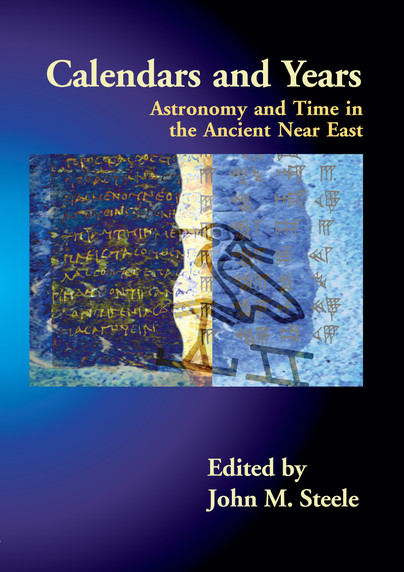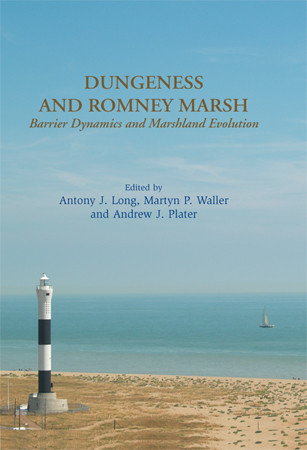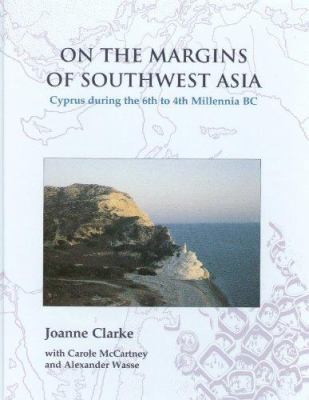
Format: Hardback
Pages: 346
ISBN: 9781902937489
Pub Date: 05 Dec 2007
Imprint: McDonald Institute for Archaeological Research
Series: McDonald Institute Monographs
Illustrations: b/w illus
Description:
The dawn of art is sometimes equated with the birth of the human spirit. But when and how did figuration - sculpture, painting, drawing - actually begin? And did these first figurative creations coincide with the emergence of our own species, Homo sapiens ?
Is figuration a general and fundamental feature of the human condition? In this challenging volume leading experts review the evidence now available from the worldwide practice of prehistoric archaeology, and go on to formulate some important conclusions. The scope of this work is global. It sets out to explore the first stirrings of artistic endeavour and of figurative imagery on each continent, and to consider the social context in which they arose. It will be a fundamental resource for all those seeking to understand the origins of art and the beginnings of human spirituality.

Format: Hardback
Pages: 204
ISBN: 9780904887532
Pub Date: 01 Dec 2007
Imprint: British School at Athens
Series: BSA Supplementary Volume
Description:
The crucial earliest phases of palatial Knossos are not well known, in part due to over-building by neopalatial structures and floors. This volume represents the first complete publication of substantial deposits dating to this period, specifically the Middle Minoan IB and IIA phases. This is a first not only for Knossos but for Crete as a whole, and will act as a crucial point of reference for future work on these key phases in the islands prehistory.
The five Protopalatial deposits in question, excavated in 1973, 1987 and 199293, are fully published with their contexts, the stratified pottery and small finds including the earliest inscribed clay document from Crete, clay sealings, horn-cores and chipped stone; radiocarbon dates are also presented. The deposits come from the south-west of the palace area, and provide evidence for a range of activities such as ceremonial feasting, workshop production and administration, as well as showing the early development of individual town dwellings on terraces just a few metres from the palace. The volume concludes with a full discussion of the form and function of the Old Palace, stressing that the plans laid down in the first 150 years were far more closely followed over the next 400 years than has hitherto been suspected.

Format: Paperback
Pages: 180
ISBN: 9781842172582
Pub Date: 22 Nov 2007
Illustrations: b/w illus t/out
Description:
This collection of fourteen papers presents the latest research into the Neolithic and Bronze Age barrows of Britain.

Format: Paperback
Pages: 152
ISBN: 9781842172506
Pub Date: 16 Nov 2007
Description:
This collection of thirteen papers focuses on what it meant to be 'on the move' at different times in prehistory. Ideas of journeys and travel are integral to many traditions of interpreting the prehistoric archaeological record. Travel was after all the driving force behind the formation and trans formation of identity.
How ironic it is that this feature of prehistory has been so overlooked when the ancient world's 'discovery' in the Eighteenth and Nineteenth Centuries occurred primarily as the result of travel. The contributors to this volume see journeys as an integral part of prehistoric life - socially meaningful - which must be understood within their (pre)historic contexts.

Format: Paperback
Pages: 356
ISBN: 9780861591596
Pub Date: 16 Nov 2007
Imprint: British Museum Press
Series: British Museum Research Publications
Illustrations: 800 b/w illus
Description:
The current conception of the absolute chronology of the Italian Copper Age to the end of the Early Iron Age is set out in this new title from the British Museum. Some 850 objects have been arranged chronologically from the Copper Age, through the Bronze Age, to the Early Iron Age. Within these headings, the objects are organised typologically e.
g. axes, swords etc. A major result of this study has been the reassembly of several groups of bronzes probably originally from hoards. Each entry includes a description, bibliogrpahy and comparanda and line drawing or photgraph.

Format: Paperback
Pages: 430
ISBN: 9780953153152
Pub Date: 08 Nov 2007
Imprint: Oxford Archaeology
Series: Bedfordshire Archaeology Monograph
Description:
Excavations at nine sites along the route of the Great Barford Bypass provided a rare opportunity to investigate an extensive area of the South Midlands claylands, a landscape that has hitherto seen little archaeological work. The excavations produced evidence for the long-term development of the social landscape, agrarian economy and environment of the area from prehistory to the Middle Ages. Sporadic occupation took place during the Neolithic and Bronze Age, with systematic colonisation first occurring in the later Iron Age.
One of the four excavated Iron Age settlements showed striking ritual activity, including what is believed to be the first conclusive evidence for the long-term curation of human bone within Iron Age Britain. In the Roman period, two of the settlements continued to be occupied and two new sites were founded. Associated features included pottery kilns and cremation and inhumation cemeteries. Early Saxon activity was also present at one of the Roman sites. A new settlement pattern appeared in the late Saxon/early medieval period, with the establishment of three farmsteads or hamlets, all of which were abandoned by the 13th century. The implications of the evidence for our understanding of the archaeology of the wider region are fully discussed.

Format: Paperback
Pages: 128
ISBN: 9781842172667
Pub Date: 16 Oct 2007
Series: Neolithic Studies Group Seminar Papers
Illustrations: b/w illus
Description:
This volume is based upon a conference which took place in 1999, reflecting the developing interest in intertidal archaeology and concentrating on the Neolithic period, as well as elements of associated Mesolithic and Bronze Age archaeology. Since then, the papers have been revised to include new discoveries and reflect the increasing interest and importance attached to the intertidal zone. All papers have supporting environmental data and radiocarbon dates.
The volume has a wide geographical spread and details the work of archaeologists working in fragile and rapidly eroding environments is evaluated: the papers demonstrate the high quality research being undertaken around the British coast to salvage archaeology by record and undertake detailed research to place it in its proper context.

Format: Paperback
Pages: 176
ISBN: 9781842173022
Pub Date: 08 Oct 2007
Description:
Dates form the backbone of written history. But where do these dates come from? Many different calendars were used in the ancient world.
Some of these calendars were based upon observations or calculations of regular astronomical phenomena, such as the first sighting of the new moon crescent that defined the beginning of the month in many calendars, while others incorporated schematic simplifications of these phenomena, such as the 360-day year used in early Mesopotamian administrative practices in order to simplify accounting procedures. Historians frequently use handbooks and tables for converting dates in ancient calendars into the familiar BC/AD calendar that we use today. But very few historians understand how these tables have come about, or what assumptions have been made in their construction. The seven papers in this volume provide an answer to the question what do we know about the operation of calendars in the ancient world, and just as importantly how do we know it? Topics covered include the ancient and modern history of the Egyptian 365-day calendar, astronomical and administrative calendars in ancient Mesopotamia, and the development of astronomical calendars in ancient Greece. This book will be of interest to ancient historians, historians of science, astronomers who use early astronomical records, and anyone with an interest in calendars and their development.

Format: Hardback
Pages: 240
ISBN: 9781842172889
Pub Date: 20 Sep 2007
Illustrations: 135 b/w illus, 29 tabs
Description:
The Romney Marsh / Dungeness Foreland depositional complex comprises an extensive tract of marshland and associated sand and gravel barrier deposits, located in the eastern English Channel. This monograph presents the results of a programme of palaeoenvironmental investigation aimed at improving our understanding of this internationally-significant coastal landform. The focus is on the evidence for landscape change during the late Holocene, from c.
3000 BC onwards, and on identifying the local, regional and global driving mechanisms responsible for the changes observed. The research details the results from two related projects, each funded as part of English Heritage's Aggregate Levy Sustainability Fund scheme. The first project concerns the late Holocene evolution of the port of Rye, located in the southeast part of the complex, and the second the depositional history of the gravel foreland. Topics explored include the vegetation and land-use history of the study area, methodological issues relating to the collection and interpretation of radiocarbon dates from coastal lowlands, the role of compaction in influencing landscape and sea-level change, and the effects of medieval storms on coastal flooding and landscape change. This monograph is intended for students and researchers interested in Holocene coastal evolution and sea-level change, coastal vegetation history and land-use history, and the development of new techniques for reconstructing past environmental change in coastal lowlands.

Format: Paperback
Pages: 144
ISBN: 9780955339318
Pub Date: 15 Sep 2007
Imprint: Sam Fogg
Illustrations: 140 col. illustrations
Description:
This is the catalogue to an outstanding collection of Medieval art from a private collection. Ranging from paintings and sculpture to stained glass, manuscripts and caskets, many of the objects presented here are of absolute rarity, some are previously unpublished and - until recently - unknown.Of particular interest are: the recently discovered Anglo-Saxon Chrismatory, the first significant piece of its kind to come to light in well over a century; the walnut Casket painted with Illustrations of the Prise d'Orange, uniquely dating from the thirteenth century and a miracle of survival; the beautiful, ninth-century Byzantine Silk Samite of Confronting Birds; and the panel of The Dream of Joseph which formed part of the programme of stained glass installed at the Abbey of St-Denis in the twelfth century - considered one of the most important of all monuments of medieval art.

Format: Hardback
Pages: 160
ISBN: 9781842172810
Pub Date: 07 Sep 2007
Illustrations: 33 b/w illus & tables
Description:
This book examines social change in Cyprus during the 6th to 4th millennia BC; a period that is traditionally viewed as one of prolonged cultural continuity and isolation from the mainland. Through the documentation and integration of technological practice and up-to-date climatic, ecological and environmental data, it is proposed that many of the observable differences between mainland southwest Asia and Cyprus during this period are the result of divergent adaptive strategies in response to different environmental conditions, low population density and low resource stress. The book draws upon theories in ecological and evolutionary biology and adapts it to cultural change in general.
By employing a holistic approach with a focus on technological practice the book seeks to show that cultural change on Cyprus is concomitant with broadly similar cultural trajectories taken in other regions on the margins of southwest Asia. The conclusion reached is that if all of the pressures that drove cultural change on the mainland were relaxed the result would be a stable hunter-gatherer economy with a bit of farming and herding: exactly what appears to be the case on Cyprus.

Format: Paperback
Pages: 176
ISBN: 9780953153138
Pub Date: 25 Aug 2007
Imprint: Oxford Archaeology
Series: Bedfordshire Archaeology Monograph
Description:
The excavations at Fairfield Park revealed a later Bronze Age hilltop enclosure and an extensive early Iron Age settlement. As one of the first large-scale excavations of an early Iron Age settlement in eastern England, the site makes a significant contribution to our understanding of the later prehistory of the region. In particular, the evidence sheds much light on issues of the organisation of settlement space and practices of ritual deposition.
The settlement dates to around the 5th-4th centuries BC, and incorporated enclosures, roundhouses and numerous storage pits. The large artefact assemblages included high status metalwork, pottery with unique forms of decoration, and a set of 49 bone weaving tools from a single pit. Human remains and animal burials had been placed in several other pits. Good environmental evidence was also obtained.

Format: Paperback
Pages: 336
ISBN: 9781842172438
Pub Date: 03 Aug 2007
Illustrations: 150 illus, 21 tabs
Description:
The archaeological investigation of shell middens has a long and rich history. By the mid 1830s, the presence of artefacts found with large accumulations of shell along the Danish coast had successfully demonstrated that these sites were the result of human activity rather than natural processes. At about the same time in other parts of Europe, shell middens were also being discovered and written about - a process which continued throughout Europe as time went on.
Until recently, European Atlantic shell middens attracted only sporadic interest from archaeologists and scientists. However, there has been a notable resurgence in the excavations of shell middens over the last few decades which has been accompanied by the development of a range of new scientific methods applicable to shells and other midden components. There now exists a sizeable amount of information on shell middens, their variability and insights that they have revealed through scientific investigation. A workshop was organised in September 2005 in the Department of Archaeology, University of York, which brought together colleagues working on shell middens along the Atlantic façade of Europe. The aims were to discuss the current work that was being carried out in each country, to consider the use of coastal resources through prehistory and to present new scientific techniques which were being developed. This volume presents the papers from that conference, and is organised geographically, starting with Scandinavia, moving down to Britain, Ireland and France and then to Iberia. For each of these areas there are some papers which provide reviews of the overall state of shell midden research of coastal archaeology. There are also some case studies which provide more in-depth information on sites which are less well known. In addition, several of the papers provide information on scientific techniques which have recently been developed and which are being applied to shell midden sites along the Atlantic façade. Finally, there is a discussion chapter, which suggests ways forward for shell midden research in Atlantic Europe from a Pacific perspective.

Format: Hardback
Pages: 240
ISBN: 9781842172513
Pub Date: 01 Jun 2007
Illustrations: b/w illus
Description:
This volume of thirteen essays came out of a conference in December 2004 at Bristol University, to celebrate the career of Mick Aston on the occasion of his retirement. They reflect his enthusiam for landscape and monastic archaeology in particular, and range in time from prehistory to the nineteenth century. Mick's ability to communicate archaeology to the masses has rightly seen him earn the title of 'The Ambassador of British Archaeology'.

Format: Paperback
Pages: 128
ISBN: 9780955339301
Pub Date: 15 May 2007
Imprint: Sam Fogg
Illustrations: 130 col. illustrations
Description:
‘Where have they come from? Where did you find them?’ These are some of the first questions we hear when people see medieval works of art like those assembled in this catalogue.
Art from this period has been collected for at least 200 years, yet there is a perception that if it is not locked away in a monastery it has found its home in a museum long ago. Nothing could be further from the truth. It is the richness and variety of what still lies unclaimed by history that makes this material so interesting.The canon of what in medieval art is considered excellent was established long ago. Recent decades have witnessed a vigourous re-evaluation of this legacy and some of its keystones have begun to loosen. For example, the pre-eminence of Italian painting over that of Northern Europe is being questioned, and classes of objects once treated as peripheral, like stained glass, are moving back to centre stage. Works of art we could not see or knew nothing about are becoming visible, and it is exciting to reveal items to a wider public in this album.

Format: Hardback
Pages: 256
ISBN: 9781842172476
Pub Date: 20 Apr 2007
Illustrations: 182 b/w illus, 69 b/w pls, 8 col pls, 16 tabs
Description:
This volume is concerned with the investigation of three complexes of prehistoric ceremonial monuments in the immediate environs of Dumfries in the south-west of Scotland, conducted between 1994 and 1998. These were the Pict's Knowe henge, the Holywood cursus complex, and the post alignments/cursus at Holm. The field research was designed in such a way as to recognise that prehistoric monuments often have complex and individual sequences of construction and use, while also acknowledging that detailed studies of particular sites and local contexts will ultimately advance our understanding of monumentality in prehistoric Europe.
The three sites of the Pict's Knowe, Holywood and Holm have proved especially helpful in addressing questions of how particular places maintained their importance over long periods of time. In each instance the location was characterised by features which possess a high degree of archaeological visibility. In the former case it was the upstanding earthwork of the bank and ditch that identified the site as a henge monument, while Holywood and Holm were discovered through aerial photography. Each of the sites investigated had complex sequences of development, in which the structural elements that were recognised prior to fieldwork were not necessarily the most important or the most long-lived. This book considers the details of the excavated features, environmental and artefactual evidence, as well as more general concerns. The first part of the volume concentrates on the Pict's Knowe, while the second looks at the more spatially and typologically related sites of Holywood and Holm.
















